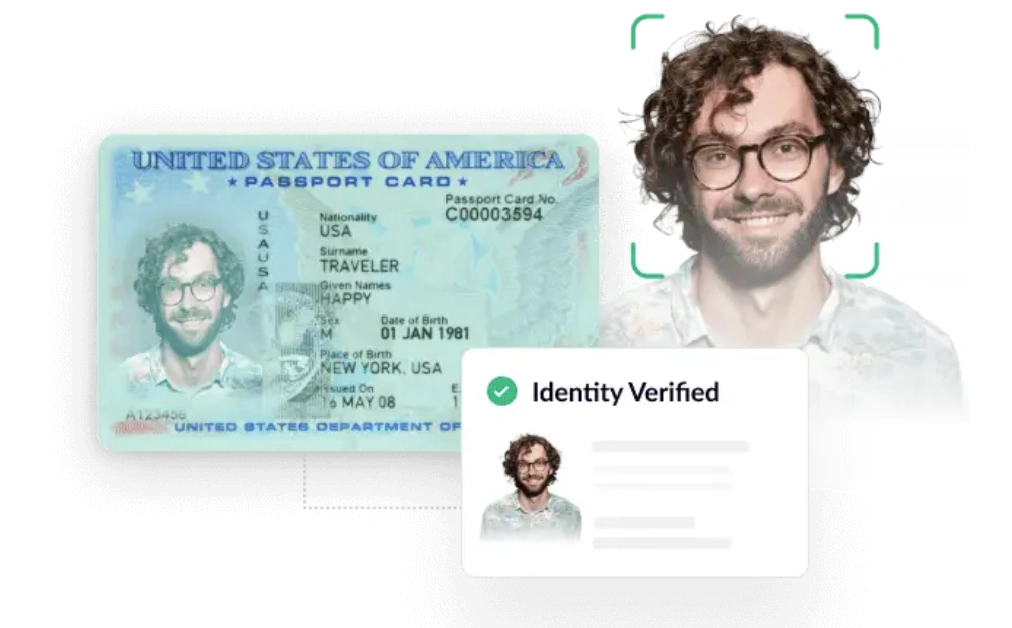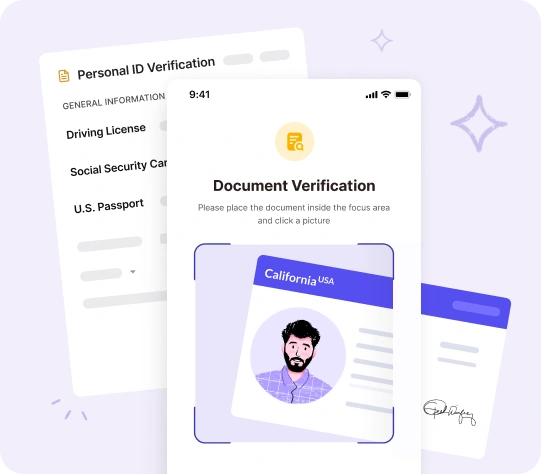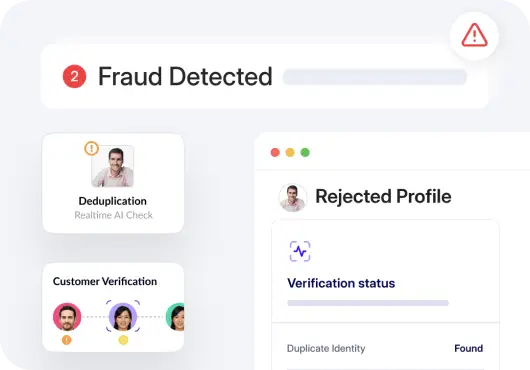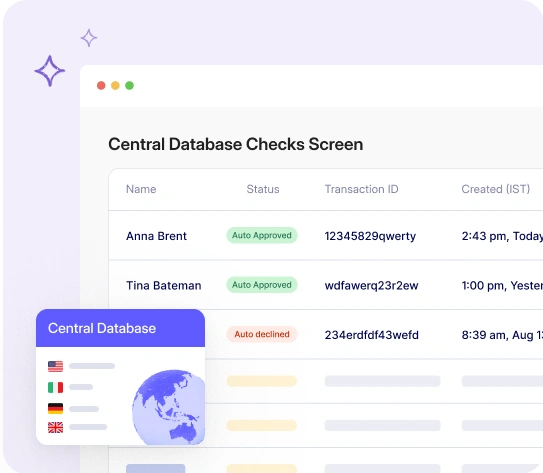The internet has undoubtedly become a double-edged sword for parents and policymakers. While it offers a wealth of knowledge, entertainment, and more, it has also exposed minors to a myriad of unsavory elements–from explicit sexual content and online predators to cyberbullying.
Lawmakers across the United States have taken notice, enacting a patchwork of age verification laws to safeguard the well-being of minors. For businesses and services owners, this evolving legal landscape presents both challenges and consequences.
In this blog, we explore the intricacies of age verification laws, and how you can remain compliant amidst a maze of legislation.
Why are age verification laws gaining traction across the US?
The push for age verification laws across various US states is driven by the growing recognition that the internet, while a powerful tool, can also expose minor users to explicit sexual material, and other age-restricted services. Nearly 50% of minors below the age of 12 have been exposed to inappropriate content online. Another report indicates that a significant percentage of children under 18 have accessed explicit material online, raising alarms among lawmakers and parents alike.
With this context, Louisiana in 2022 became the first state to bring age verification legislation. As of June 2024, 12 other states––Indiana, Tennessee, South Carolina, Oklahoma, Kansas, Alabama, Georgia, Nebraska, Kentucky, Florida, Idaho, and South Dakota have followed suit. Additionally, at least 7-8 more states, including New Jersey, Pennsylvania, and California, are in the process of introducing similar legislation before the end of 2024.
Age verification regulations have sparked legal challenges and enforcement issues across various states. Non-compliance with these regulations can result in substantial fines, sometimes reaching as high as $10,000 (if the non-compliance is willful). Beyond the financial penalties, businesses that fail to implement adequate age verification measures may also face legal battles, with the potential for negligence claims and endangering minors.
It is already clear that in the near future, more states are going to adopt these regulations. And, that businesses no longer have a choice when it comes to age verification compliance.
This makes it imperative that businesses and online service providers stay informed and make provisions to avoid non-compliance.
If you are curious whether your business or website could come under the scanner of age verification laws, the answer might actually surprise you—read on!
Wondering best ways to fraud detection and prevention?
End your search with HyperVerge. Book a quick demo with us today!Are you impacted by age verification laws? A breakdown for US businesses
The definition of “harmful to minors” content that triggers age verification requirements can be quite broad. Explicit adult material is an obvious inclusion, but the rules also extend to implied sexual themes, violence, drug use, and hate speech. Exclusions apply to search engines, cloud storage, and news sites, but the line is actually blurry for other platforms.
To simplify this, below is a broad breakdown of US businesses under scrutiny for age verification in terms of industry and state they operate in.
1. Industry-wise
If your company operates in the financial services, fintech, crypto, or gaming industries, you’re likely subject to age verification requirements. These sectors largely handle age-restricted products or services, making compliance almost mandatory.

For instance, in the financial world, regulations like the Know Your Customer (KYC) rules require you to verify the identities and ages of your clients. This often involves the collection and storage of extensive personal data, (often raising significant privacy and security concerns).
Similarly, crypto exchanges must comply with anti-money laundering (AML) laws, which often mandate age verification checks.
These industries can have a powerful combination of AML and age verification solutions to have full-proof protection of their business, the customers, and their finances.
There are other industries that may be impacted by age verification laws such as–
- Adult entertainment and user-generated content platforms sites like OnlyFans, where content varies widely, face uncertainties about compliance.
- Streaming services platforms like Netflix, and Amazon for hosting content rated R, PG-13, TV-MA, or TV-14.
2. State-wise
Louisiana’s Act 440, enacted in 2022, mandates age verification for any website or platform with at least one-third adult or pornographic content (accessible to Louisiana residents), while Utah’s SB 194 and HB 464 demand age verification on social media.
Further, Oklahoma’s HB 3914 requires social media users under 18 to have parental consent. California’s AADC (California’s Age-Appropriate Design Code Act) focuses on privacy and risk-based age assurance for sites likely accessed by children. Additionally, the Texas age verification law (Texas House Bill 1181) requires websites with adult content to implement strict age verification measures (ensuring individuals are at least 18 years old) to prevent minors from accessing such material.

So, if you’re a business owner or service provider wondering how you should design your age verification solutions amidst different sets of legislation, read further.
Key considerations for implementing age verification and AML compliance
It is natural to wonder what kind of age verification and AML systems your business should opt for, especially if you fall under the regulated industries category. With advancements in technology, age verification processes have become more effective and secure, playing a crucial role in safeguarding minors and ensuring compliance with legal regulations.
Below, we have outlined a simple, yet effective, framework to help you create a fully compliant and functional age verification system, regardless of the industry or state.
Risk-based approach
Understand the basic risk nature of your business/industry.
Not all websites, businesses, or interactions carry the same level of risk. For instance, accessing a news website like CNBC may pose a lower risk compared to a website like OnlyFans. This is because OnlyFans caters to adult content, which is inherently more sensitive and subject to higher scrutiny from the law and regulatory authorities. Additionally, content on platforms like OnlyFans may be classified as ‘material harmful’ under legal regulations (which define and potentially restrict content deemed inappropriate for minors).

Such websites may implement identity verification, such as government-issued ID checks and biometric authentication, as well as transaction monitoring to detect and report any suspicious activities. In contrast, a news website may only require more basic email or SMS-based verification for user access.
In other words, understanding the unique risk factors associated with the business model is paramount in determining the appropriate level of age verification and AML compliance measures to be implemented.
User experience
As a business owner or service provider, the balance between compliance and user experience could be the difference between retained clients and losses. If you bank on lengthy and painfully stretched verification processes, you are undoubtedly frustrating your customers.
To ensure your compliance is not compromised but at the same time user experience is top-notch, you can–
1.Simplify the process: Minimize the number of steps required and provide clear, concise instructions to guide users through the verification process.

2. Leverage familiar authentication methods: Allow users to verify their identity using common and convenient methods, such as uploading a photo of their government-issued ID or using biometric authentication (e.g., fingerprint or facial recognition).
3. Offer transparent communication: Clearly explain the purpose and importance of the age verification and AML compliance measures, and provide users with updates on the status of their verification.
4. Implement retry options: If a user’s initial verification attempt is unsuccessful, offer them the ability to try again without unnecessary timeouts or penalties.
Data security
While you navigate age verification laws, you want to avoid trapping yourself into another legal hurdle–data security and privacy. The Free Speech Coalition has been a vocal advocate against age verification laws, emphasizing that these laws not only impede the dissemination of adult content but also raise significant privacy concerns. A few important pointers to keep in mind when dealing with data security are–
- Implementing strong encryption protocols to protect user data both in transit (while being transmitted between devices or servers) and at rest (when stored in databases or servers). This helps prevent unauthorized access or data breaches, which could have serious consequences for both the business and its users.
- Establishing appropriate access controls, and limiting the number of individuals who can view or interact with user data. This includes implementing role-based access, multi-factor authentication, and regular security audits to ensure that only authorized personnel can access sensitive information.
- Having robust data backup and recovery processes in place to ensure that user data can be restored in the event of a system failure or data loss incident.
Accuracy, reliability, and reasonable age verification methods
The accuracy and reliability of an age verification solution are arguably the most critical for businesses to protect themselves from regulatory issues and build trust with customers. Businesses may rely on some common age verification methods such as:
- Document checking: Validating government-issued IDs, such as driver’s licenses or passports, against authoritative databases to confirm the user’s age and identity.
- Biometric authentication: Utilizing biometric data, such as facial recognition or fingerprints, to verify the user’s identity and age. To learn more, click here.

- Knowledge-based authentication (KBA): Using a Q&A structure to record answers to questions known only to the user.
- Vouching: Allowing users to be verified by trusted third parties, such as parents, guardians, or legal representatives.
- Physical verification: Conducting in-person checks to ensure the user’s age.
Now, depending on your business type and risk at hand, you can use a combination of these methods (for instance, combining physical verification with KBA) to create a full-proof robust system.
Scalability
If you anticipate your business experiencing rapid expansion or a significant increase in user traffic in the near future, a scalable age verification solution should be your top priority. For scalability, you can think in terms of–
- Number of users: Your age verification solution should be able to handle a growing number of verification requests without compromising the user experience or performance.
- Types of transactions: The verification system should be capable of adapting to different types of transactions, from simple website registrations to complex financial activities as your business evolves.
- Geographic regions: A scalable age verification system should be able to support users located in various parts of the world, with the ability to handle different languages and regulatory requirements.
Compliance with regulations
Different states are on different layers of legislation, laws, and regulatory practices when concerning age verification currently. The essence is that age verification laws are rapidly changing and it is absolutely paramount that your established system of verification is always up-to-date with recent updates and changes.

Some factors you can note to create a solid system are–
- Specific age restrictions: Understand the specific age restrictions that apply to your business, whether it’s the legal drinking age, the minimum age for gambling, or any other age-related thresholds.
- Industry: Legislative changes could bring in different regulatory practices for different industries. You must thus be careful to note what industry your business is classified in and make provisions accordingly.
- Jurisdictions: As discussed above, researching the verification methods that are considered compliant in the jurisdictions where your business operates is crucial. For instance, government-issued IDs may be considered valid age verification documents in one state and not in another.
You could also regularly follow news and updates from the White House to protect not just your business but also your customers with proper compliance.
Integration with existing systems
When implementing an age verification solution, seamless integration with your existing business systems and processes is paramount. This can be achieved through the use of well-designed application programming interfaces (APIs) that allow for the smooth exchange of data and information.
Businesses can leverage APIs with other key systems, such as customer relationship management (CRM) platforms, e-commerce platforms, or financial systems. This integration can ensure customers don’t have to navigate between multiple systems to complete the verification process.

However, here’s an under-discussed pointer–your technical team. The success of your integrations is heavily dependent on the expertise and technical capabilities of your IT team.
How your IT and customer support team tackles tickets, inquiries, and back-end work can literally make or break the entire verification process, and your reputation.
Lastly, let’s not forget the integration of AML systems in your age verification solutions. Treat this integration like hitting two birds with one stone.
For highly regulated industries, as discussed above, age verification alone isn’t enough. By combining AML, you create a foolproof compliance system that not only verifies age but also protects your and your customers’ finances.
Simplifying compliance with HyperVerge’s commercial age verification system
The complexity of age verification laws across the US is making it increasingly difficult for businesses to stay compliant. Requirements vary widely across states–from acceptable verification methods, and age assurance to penalties for non-compliance.
Staying on top of the ever-evolving regulations can be a constant headache no business wants.
Enter HyperVerge which offers streamlined age verification and AML solutions. Its industry-leading identity verification platform leverages powerful AI models and passive liveness detection to instantly onboard users, while ensuring airtight compliance.
Whether you operate in gaming, fintech, or e-commerce, HyperVerge’s seamless integrations and high conversion rates can help onboard customers quickly–even in low-conversation industries.
Focus on growth, not regulatory hurdles. Book a demo today.





